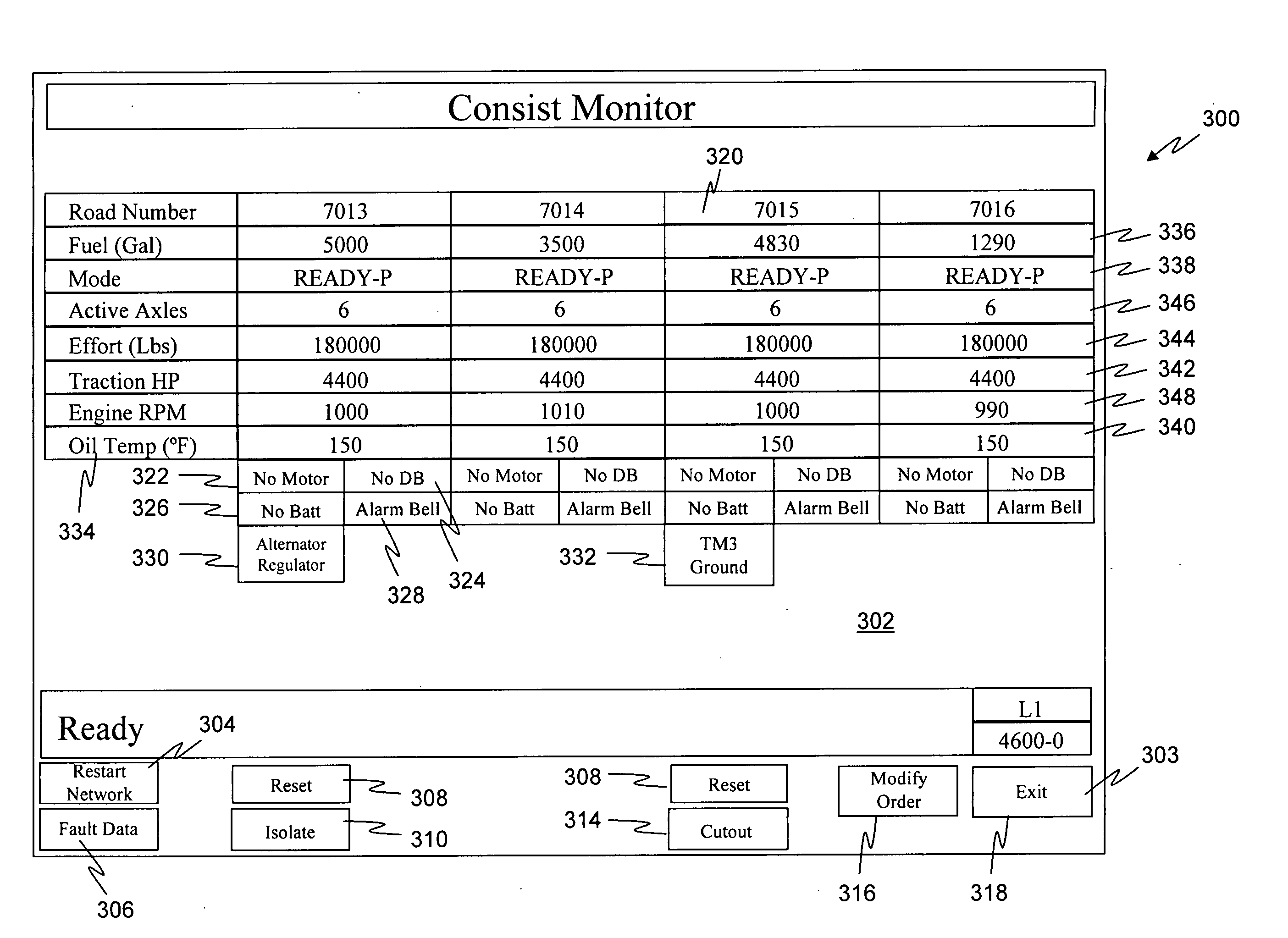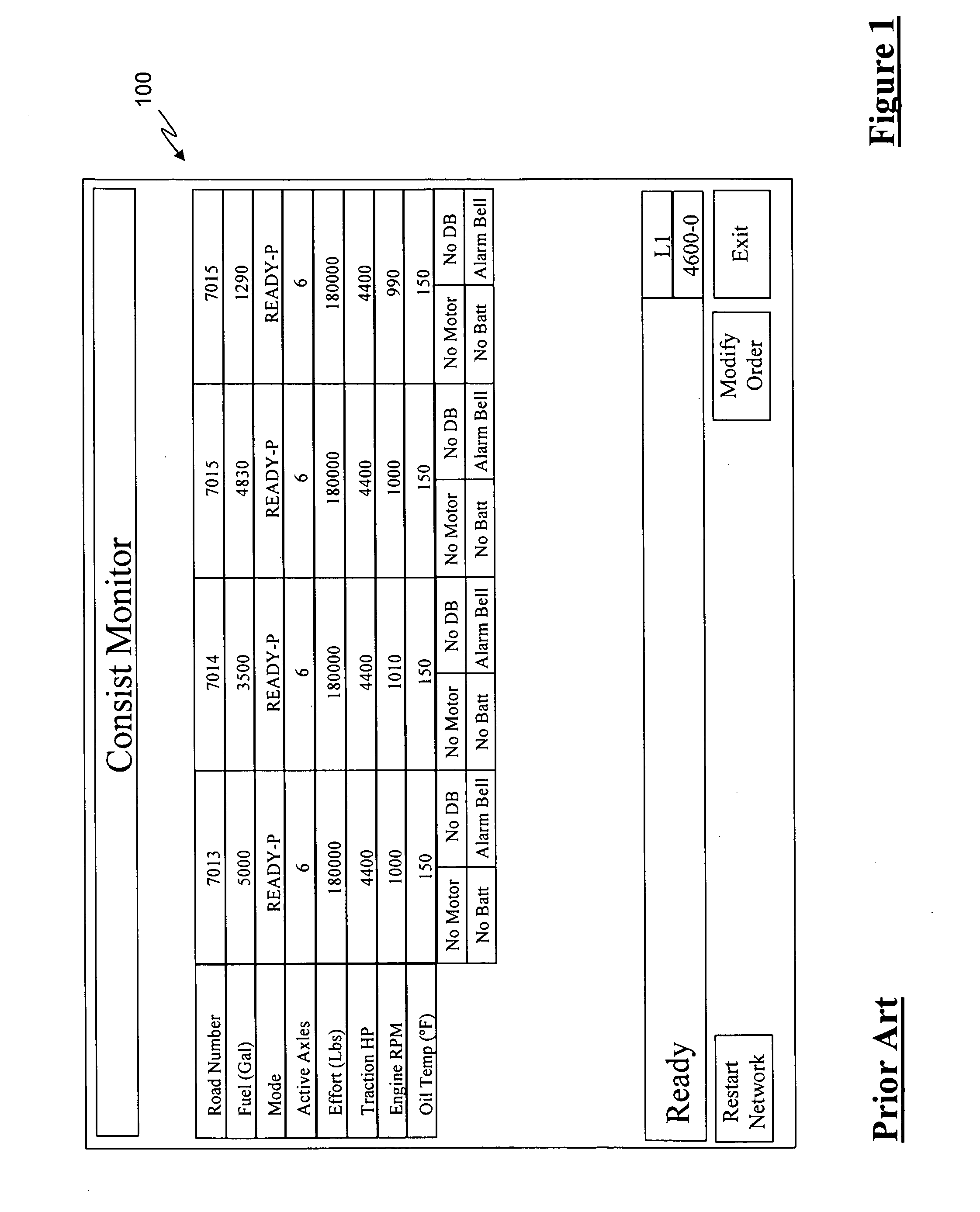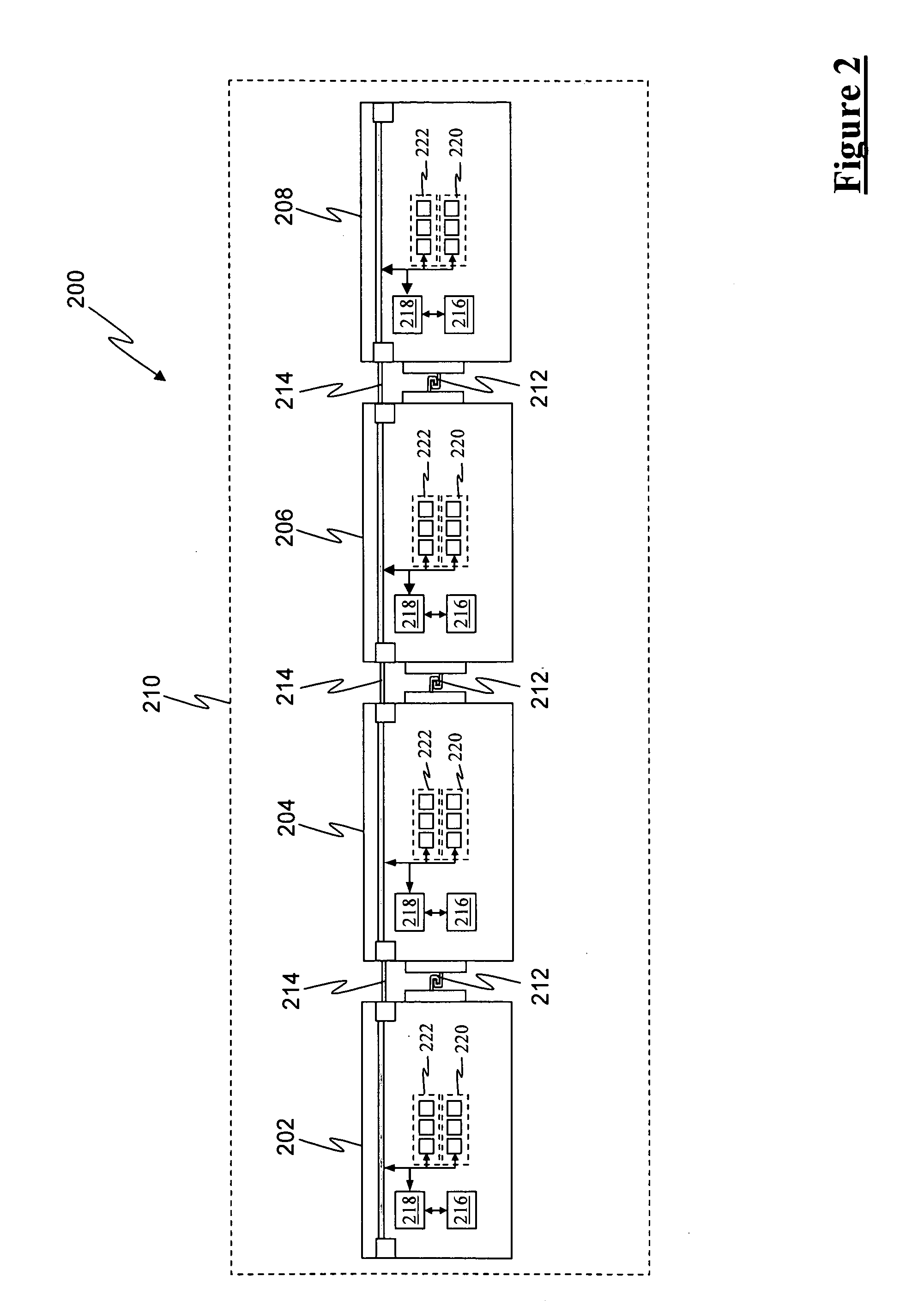Locomotive consist configuration control
a configuration control and locomotive technology, applied in the direction of vehicle position/course/altitude control, process and machine control, instruments, etc., can solve the problems of increasing the likelihood of injury and/or death, cumbersome and heavy, extreme environmental conditions of locomotives used for heavy haul applications
- Summary
- Abstract
- Description
- Claims
- Application Information
AI Technical Summary
Benefits of technology
Problems solved by technology
Method used
Image
Examples
Embodiment Construction
[0018] Referring to FIG. 2, a schematic block diagram illustrating one embodiment of a locomotive consist system 200 is shown and includes a first locomotive 202, a second locomotive 204, a third locomotive 206 and a fourth locomotive 208 connected in a consist 210 via a plurality of connection devices, such as a plurality of mechanical connection devices 212. Additionally, each of the first locomotive 202, the second locomotive 204, the third locomotive 206 and the fourth locomotive 208 are communicated with each other via a Multiple Unit (MU) line 214. Each locomotive may include a processing device 216, an input / output device 218, at least one controller device 220 and at least one sensing device 222, wherein the processing device 216, the input / output device 218, the at least one controller device 220 and the at least one sensing device 222 may be communicated with each other. Moreover, the processing device 216, the input / output device 218 and the at least one controller device...
PUM
 Login to View More
Login to View More Abstract
Description
Claims
Application Information
 Login to View More
Login to View More - R&D
- Intellectual Property
- Life Sciences
- Materials
- Tech Scout
- Unparalleled Data Quality
- Higher Quality Content
- 60% Fewer Hallucinations
Browse by: Latest US Patents, China's latest patents, Technical Efficacy Thesaurus, Application Domain, Technology Topic, Popular Technical Reports.
© 2025 PatSnap. All rights reserved.Legal|Privacy policy|Modern Slavery Act Transparency Statement|Sitemap|About US| Contact US: help@patsnap.com



